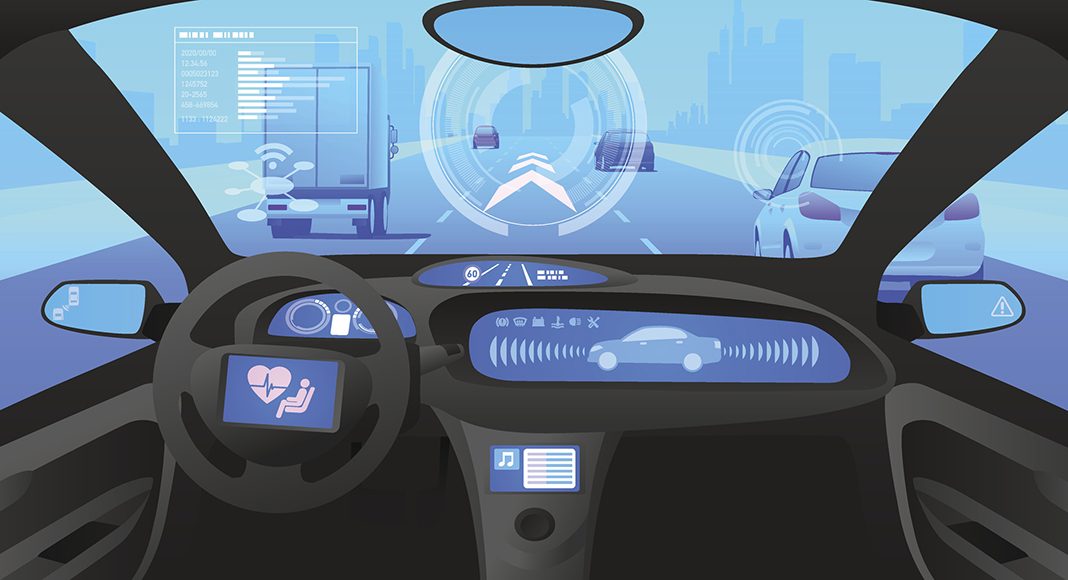The Insurance Institute for Highway Safety (IIHS) is testing driver assistance features to help in the development of a consumer ratings program.
So far, evaluations of adaptive cruise control and active lane-keeping have shown variable performance in typical driving situations, such as approaching stopped vehicles and negotiating hills and curves. According to IIHS these early results underscore the fact that driver assistance features are not robust substitutes for human drivers.
âThe new tests are an outgrowth of our research on Level 2 autonomy,â said Jessica Jermakian, IIHS Senior Research Engineer. âWe zeroed in on situations our staff have identified as areas of concern during test drives with Level 2 systems, then used that feedback to develop road and track scenarios to compare vehicles.â
The Level 2 systems tested by IIHS include a combination of adaptive cruise control and active lane-keeping. The level of autonomy is based on SAE Internationalâs scale of autonomy, that ranges from zero to Level 5 (full autonomy).
Vehicles tested to date include the 2017 BMW 5-series with âDriving Assistant Plusâ, 2017 Mercedes-Benz E-Class with âDrive Pilotâ, 2018 Tesla Model 3 and 2016 Model S with âAutopilotâ (software versions 8.1 and 7.1, respectively) and 2018 Volvo S90 with âPilot Assistâ. All five vehicles have automatic emergency braking systems rated superior by IIHS.
Adaptive cruise control (ACC)
Tests have been carried out to determine how vehicles handle stopped lead vehicles and lead vehicles exiting a lane, and how the systems accelerate and decelerate. One of the tests involved driving at 31 mph toward a stationary vehicle target with ACC off and autobrake turned on to evaluate autobrake performance. The two Teslas hit the stationary target.
In another scenario the test vehicle followed a lead vehicle which then changed lanes to reveal a stationary inflatable target vehicle in the path ahead when the time to collision was about 4.3 seconds. None of the vehicles crashed into the target, and the 5 series, E-Class and Teslas all braked earlier and gentler than the S90.
Active lane-keeping
To test active lane-keeping on curves, engineers conducted six trials with each vehicle on three different sections of road with radii ranging from 1,300 to 2,000 feet. Only the Model 3 stayed within the lane on all 18 trials. The Model S overcorrected on one curve, causing it to cross the line on the inside of the curve in one trial. None of the other systems tested provided enough steering input on their own to consistently stay in their lane, often requiring the driver to provide additional steering to successfully navigate the curve.
The E-Class stayed within the lane in nine of 17 runs and strayed to the lane marker in five trials. The system disengaged itself in one trial and crossed the line in two. The 5 series stayed within the lane in three of 16 trials and was more likely to disengage than steer outside the lane. The S90 stayed in the lane in nine of 17 runs and crossed the lane line in eight runs.
Additional research for development of consumer rating system
IIHS will continue to run track and on-road tests as it moves toward a consumer rating system for advanced driver assistance systems. In addition to questions about whether the systems perform as drivers expect, IIHS says of the many factors to consider is how much of the driving task can safely be handed over to technology without drivers checking out altogether.
âDesigners are struggling with trade-offs inherent in automated assistance,â said David Zuby, IIHS Chief Research Officer. âIf they limit functionality to keep drivers engaged, they risk a backlash that the systems are too rudimentary. If the systems seem too capable, then drivers may not give them the attention required to use them safely.â
Visit the IIHS website for the full test results.



















